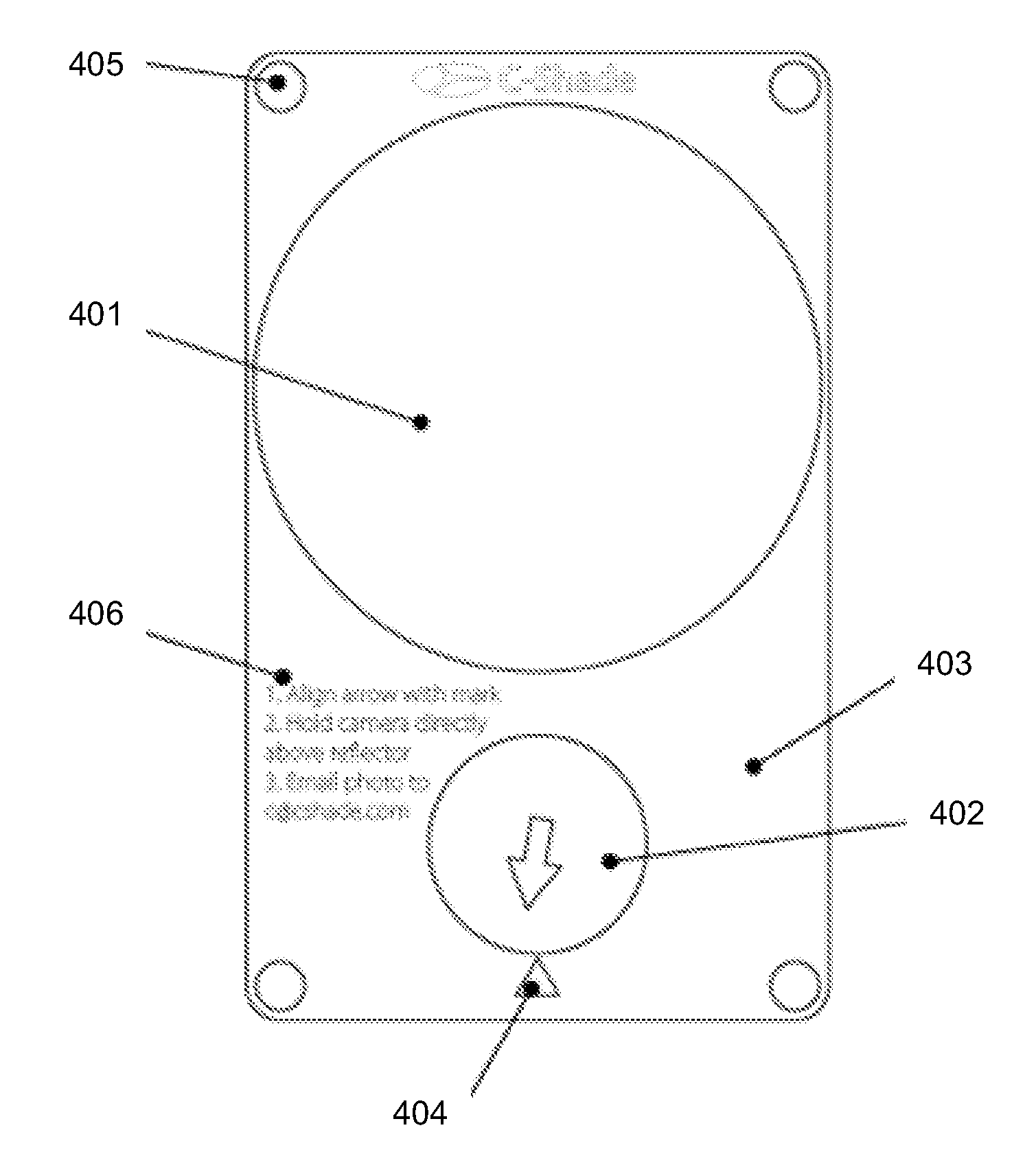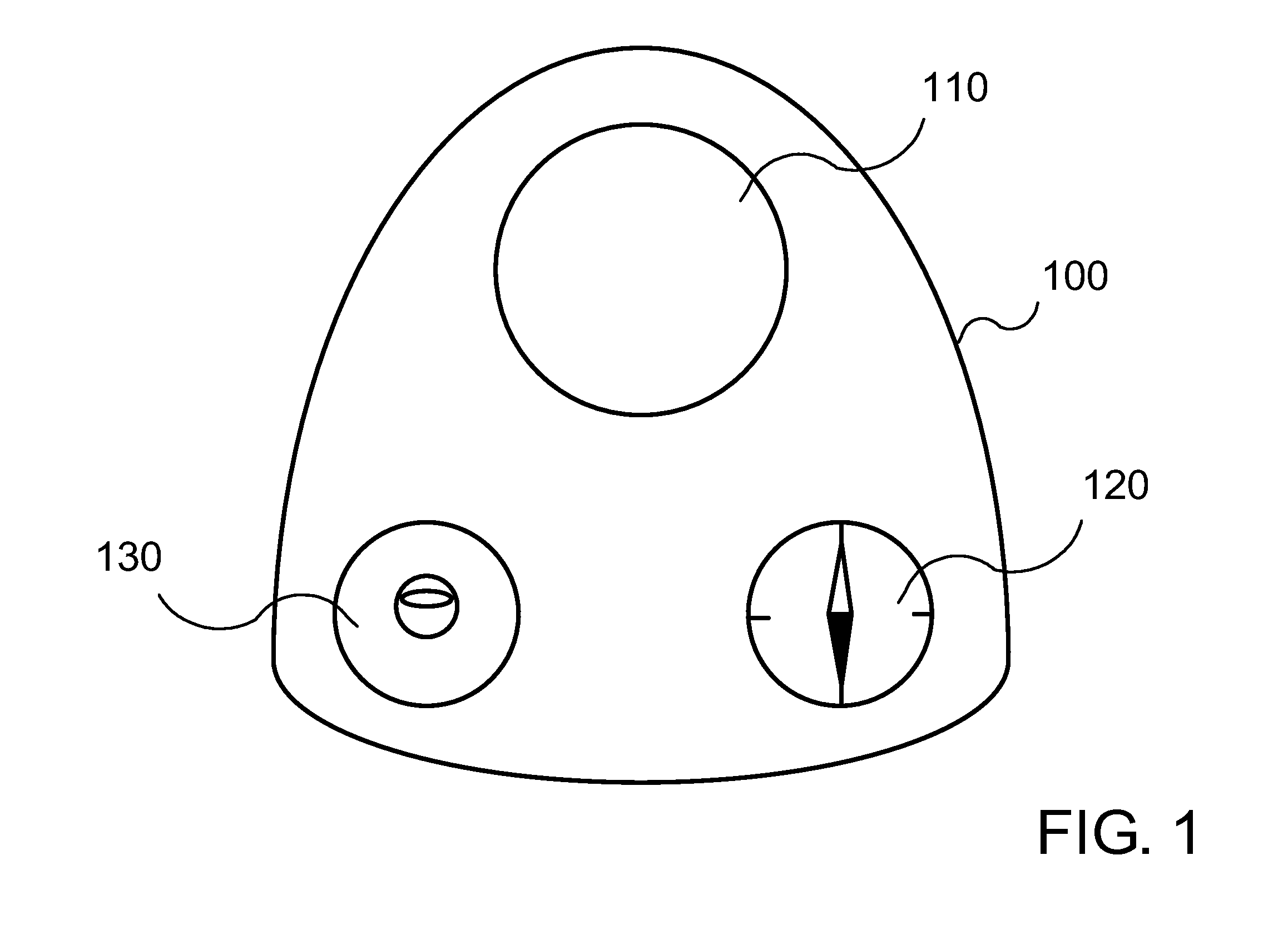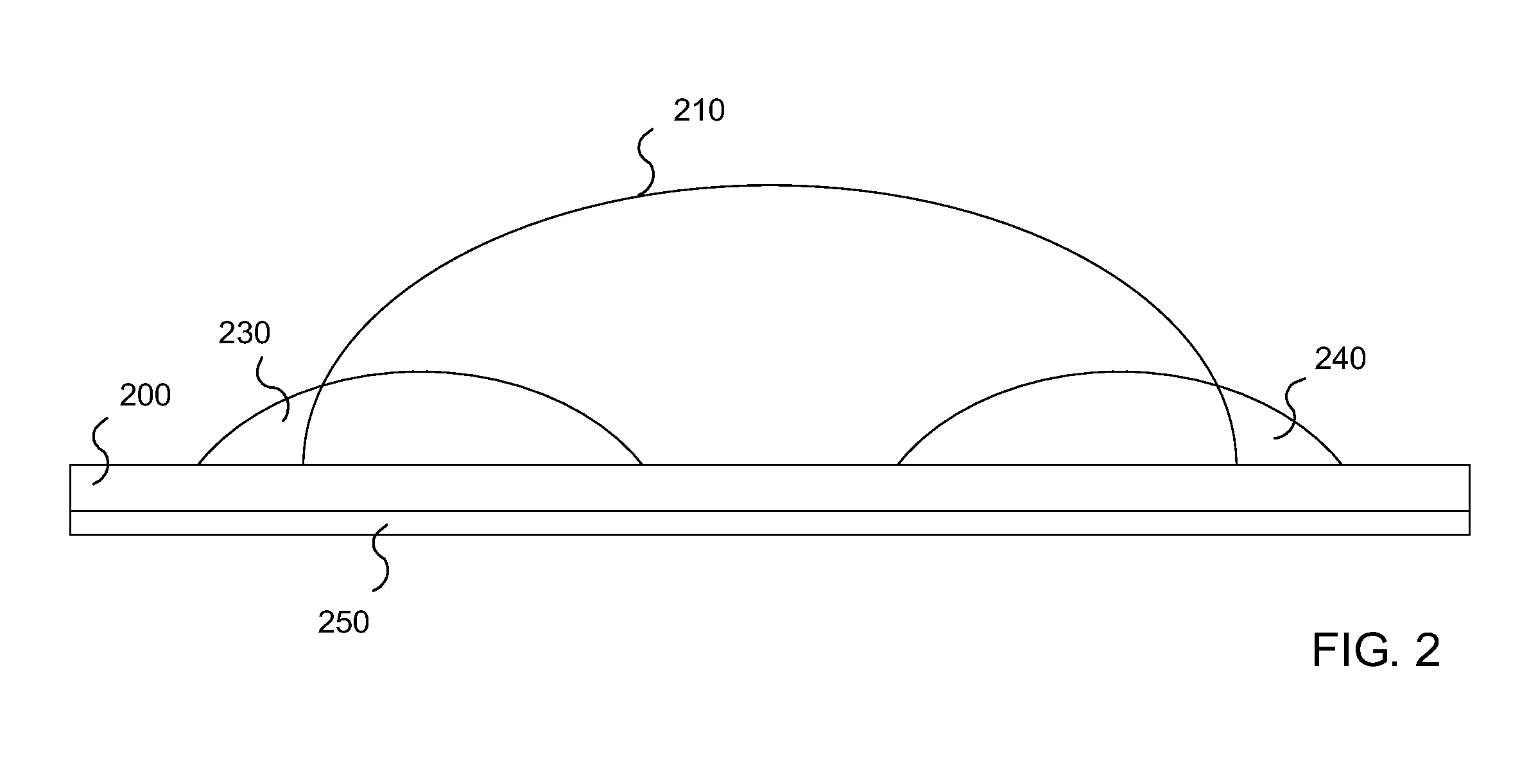Methods and systems for solar shade analysis
a technology of solar radiation and methods, applied in the field of methods and systems for solar radiation analysis, can solve the problems of device limitations, difficult to make accurate measurements, and limited number of systems that measure solar radiation
- Summary
- Abstract
- Description
- Claims
- Application Information
AI Technical Summary
Benefits of technology
Problems solved by technology
Method used
Image
Examples
first embodiment
[0032]Referring to FIG. 1, in a first embodiment, the solar shading analysis device may include a fish-eye lens 110 that is placed on a platform 100. The fish-eye lens may be made of plastic or some other material. A level 130, such as a bubble level, may also be placed on the platform 100. Further, the platform 100 may also hold a compass 120. The platform may also be made of plastic and have some kind of adhesive backing. FIG. 1 shows one embodiment of the solar shading analysis device from a bird's eye view.
[0033]FIG. 2 shows one example of a side view of a first embodiment of the solar shading analysis device. A fish-eye lens 210, a level such as a bubble level 230 and a compass 240 may be included and placed on a platform 200. As can be seen in FIG. 2, the platform 200 may have some kind of adhesive backing 250.
[0034]Referring to FIG. 3, the solar shading analysis device may be placed over the lens of a built-in camera 340 of a mobile phone (or other device with a camera) 350. ...
second embodiment
[0037]Referring to FIG. 5, one embodiment of a user's interaction with the solar shading device is shown. A person using the device 501 may place the solar shading device 502 on the surface of a roof 503, or in another location where solar shading analysis is required. The device 502 may be oriented so that the compass arrow is pointing in the general direction of the mark and towards the user 501. The user 501, while standing above the device 502 and keeping the camera phone 504 directly above the device 502, may take a photo of the device 502.
[0038]In order to accurately calculate solar availability using the solar shading device 502, the camera must be level and as close as possible to directly above the device 502 such that a plumb line from the camera lens would go through the center of the device. The natural sense of balance of the user will keep the user's body positioned so that the camera will be close to the required position if the user is instructed to keep the device c...
PUM
| Property | Measurement | Unit |
|---|---|---|
| transparent | aaaaa | aaaaa |
| self-adhesive | aaaaa | aaaaa |
| magnetic | aaaaa | aaaaa |
Abstract
Description
Claims
Application Information
 Login to View More
Login to View More - R&D
- Intellectual Property
- Life Sciences
- Materials
- Tech Scout
- Unparalleled Data Quality
- Higher Quality Content
- 60% Fewer Hallucinations
Browse by: Latest US Patents, China's latest patents, Technical Efficacy Thesaurus, Application Domain, Technology Topic, Popular Technical Reports.
© 2025 PatSnap. All rights reserved.Legal|Privacy policy|Modern Slavery Act Transparency Statement|Sitemap|About US| Contact US: help@patsnap.com



